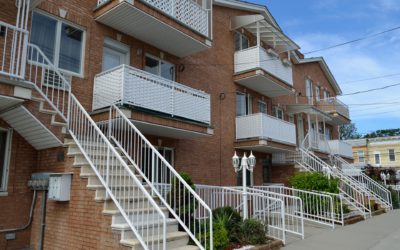For many real estate investors, the goal of buying property is to achieve monthly cash-flow. For others, it is an opportunity to build equity in assets that will appreciate over time. Beyond these broad principles, there are many different kinds of properties that can be purchased, rented out, and sold.
The end goal is often the same, however: getting a return on your initial investment. While a lot of the same terms and rules-of-thumb can be applied across these types of properties, there are some key differences that investors should be aware of.
Those new to the world of real estate investing (or those who have only invested in one kind of property) often wonder if investing in single-family homes or multi-unit properties is a better route. A single-family home is just that: a property designed to house one family. It could be a free-standing home, a townhome or an apartment. A multi-family property can be rented to multiple renters. It may be a duplex, triplex or apartment building. There are some unique distinctions and benefits and drawbacks to each.
What do these investment properties have in common and what separates them? Is one better than the other and which is best for you?
What Single and Multi-Family Investment Properties Have in Common
Whether you invest in single or multi-family real estate you should be prepared for what they each have in common.
- Being a landlord requires time and/or money. It takes a surprising amount of time to find tenants and manage/maintain a property. Many times rent payments may be late, and you may receive nighttime phone calls for property emergencies or lock-outs. Some landlords discover that being a landlord is not for them and may choose to hire a property manager instead, but that does require some portion of their revenue and potentially some level of input on how the property is managed.
- Investment real estate loans are often more expensive than traditional mortgages. Whether it is a single-family investment property or a multi-family investment property, banks and mortgage lenders view investment property loans as riskier than a traditional mortgage. Interest rates will likely be higher and down payment requirements may be larger. Banks want to be assured their risks are minimized by making sure borrowers have enough “skin in the game.”
- Both single and multi-family properties are attractive investment vehicles. Investment properties have tax advantages and when properly managed, the risk of losing an entire investment is minimal. It is, after all, backed by real property and will have resale value should an investor decide to change course. The key to a solid return is efficient and effective management and minimizing vacancies. Whether it is a single or multi-family property, choosing quality, qualified tenants are crucial.
- The benefits, drawbacks, and potential of any property will be largely influenced by the area it is in. “Location, location, location” is as true a saying as it is popular. What works in one region may not be a great deal in another.
Investing in Single-Family Properties
One of the most attractive aspects of investing in single-family homes is that it has a lower investment barrier than many multi-family properties. It not only has a lower initial cost, but monthly ongoing costs are lower as well. Investors can often expect lower property taxes, insurance costs, and utilities.
Single-family home investors also have the benefit of dealing with fewer tenants. This allows landlords to be choosier about who they lease to, acquire higher-quality tenants, and cultivate a good relationship with them. This has multiple benefits including helping to assure rent is paid in a timely manner and the property is better cared for. It also increases residency length and minimizes costly vacancies. Keep in mind that vacancies can be more impactful when compared to multi-family vacancies, however, as the property will not generate any income at all when a single tenant leaves.
Single-family investment properties generally appreciate at a higher value since their value is not so tied to its ability to produce income. Single-family homes can be a more solid investment that is easier to sell in the future (due to a larger pool of potential buyers). An initial investment in a single-family home provides an opportunity for an investor to decide if investing in real estate is for them. They can add additional single-family properties to their portfolio or move into multi-family real estate.
Investing in Multi-Family Properties
Because multi-family properties have several units, they have the potential to produce higher levels of income. Since much of the value of a multi-family property is based on the amount of income it produces, owners have more control and receive more of a benefit from property improvements. Multi-family properties that have been mismanaged or poorly cared for can provide significant returns with upgrades like security, smart features, and interior upgrades. As rents increase, so does the ultimate value of these type of properties.
One benefit of multiple units can be seen during vacancies/tenant turnover. A single-family home that loses one tenant will produce no income until the next tenant is found. A full four-plex that loses one tenant will generate roughly 75% of its potential income until the next tenant is found (assuming all units are rented at the same rate).
Larger multi-family properties may be a bit daunting to newer investors, but duplexes, tri-plexes, and four-plexes can serve as a great introduction to this investing strategy. Furthermore, multi-family investors have the option of inhabiting one of their units to keep an eye on the condition of their property and reduce their living expenses. If you are planning to live in an investment property for a year or more, you may be able to use an FHA loan to obtain their property with a lower down payment and interest rate than you may get otherwise.
What’s best for you?
Choosing between a single-family and multi-family investment property will depend on the amount of investment you can, or are willing, to make. It will be impacted by how much time you can spend managing the property yourself or if you will hire a property manager. It will also depend on your investment goals.
In either case, it is important that an investor perform due diligence and acquire a thorough property inspection before purchasing a property. In the case of a multi-family unit, rental history and current tenant leases will want to be reviewed. In either case, you should be financially prepared to withstand lengthy vacancy periods.
When managed properly, real estate can be a solid investment that can have exceptional returns. Knowledge is power in real estate, and taking the time to understand the finer details of the industry can make all the difference when it comes time to sign on the dotted line.
Originally published on Groundwork






0 Comments